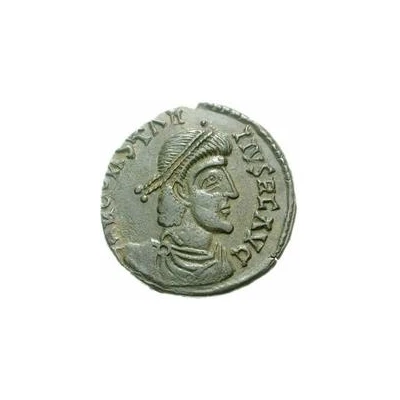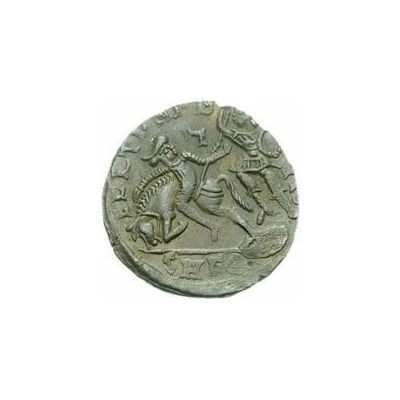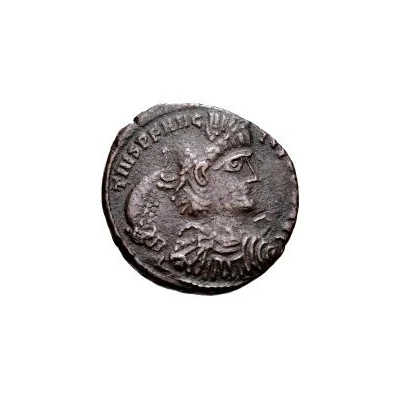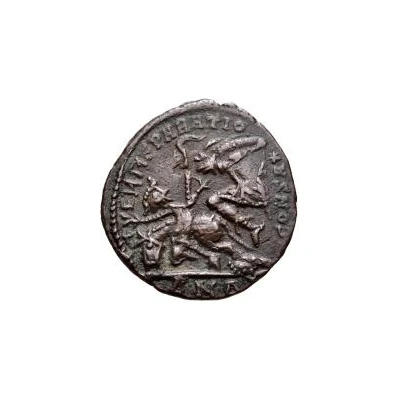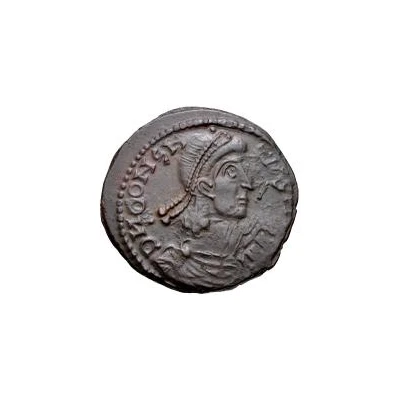
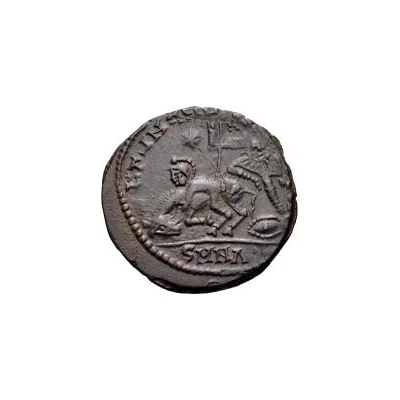

© Classical Numismatic Group, Inc.
Æ In the name of Constantius II; Horseman facing down; full reverse legend
| Bronze | 6.02 g | 23 mm |
| Issuer | Uncertain Germanic tribes |
|---|---|
| Type | Standard circulation coin |
| Years | 351-425 |
| Currency | Solidus (circa 301-750) |
| Composition | Bronze |
| Weight | 6.02 g |
| Diameter | 23 mm |
| Shape | Round (irregular) |
| Technique | Hammered |
| Demonetized | Yes |
| Updated | 2024-10-04 |
| Numista | N#153931 |
|---|---|
| Rarity index | 97% |
Reverse
Soldier spearing fallen horseman, all surrounded by legend.
Script: Latin
Lettering:
LTLNCST[...]
SMNA
Translation:
[Felicitas Temporum Reparatio]
[Happy times are restored]
Edge
Plain
Comment
This coin is said to be struck from the mid-4th to early-5th centuries. While the mintmarks on most of these types are of uncertain mints, the two that can be confirmed are imitating the Antioch mint and the Nicomedia mint. The prototypes for those two mints were both first struck in 551, meaning that is the most-likely beginning date for this entire type of AE struck by an Uncertain Germanic Tribe.The denominations of bronze coins that are unknown to numismatists are referred to as Æ (AE), followed by the coin's diameter. The Æ part simply means the coin is made of a base alloy, and because the diameter of these coins is never exactly as intended, different numbers can appear after the Æ for the same type.
The exact lettering of the surrounding legend may vary; while some coins have legible legends, the legends of others may have been reduced to basically only lines.
Interesting fact
One interesting fact about this coin is that it features a horseman facing down, which is a unique design element for coins from this time period. Typically, horsemen were depicted facing up or to the side, so this design choice suggests that the artist wanted to convey a sense of movement or action. Additionally, the use of bronze as the material for the coin was a common choice for coins during this time period, as it was a durable and affordable metal that could be easily minted and distributed. Overall, this coin offers a fascinating glimpse into the artistry and craftsmanship of ancient coinage.
